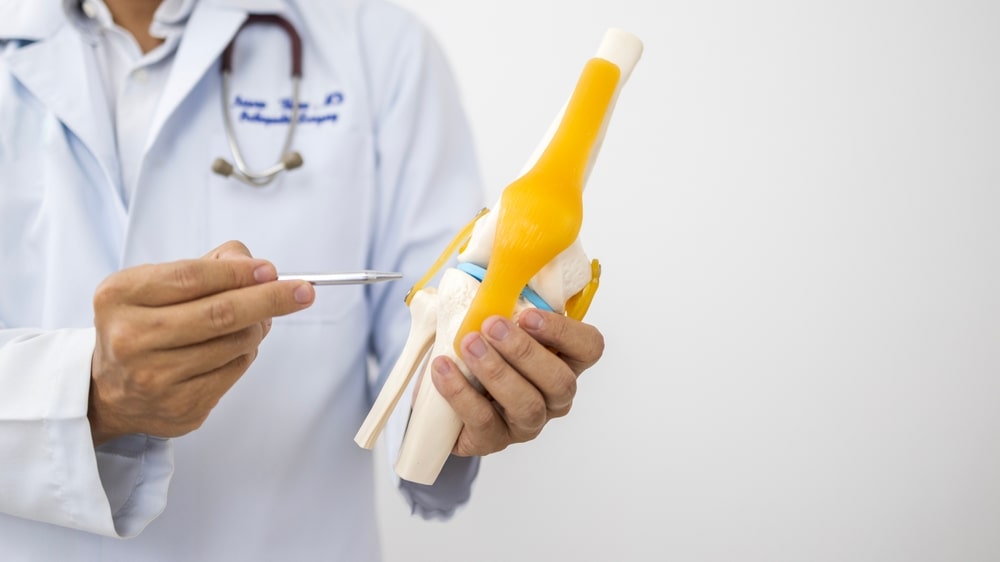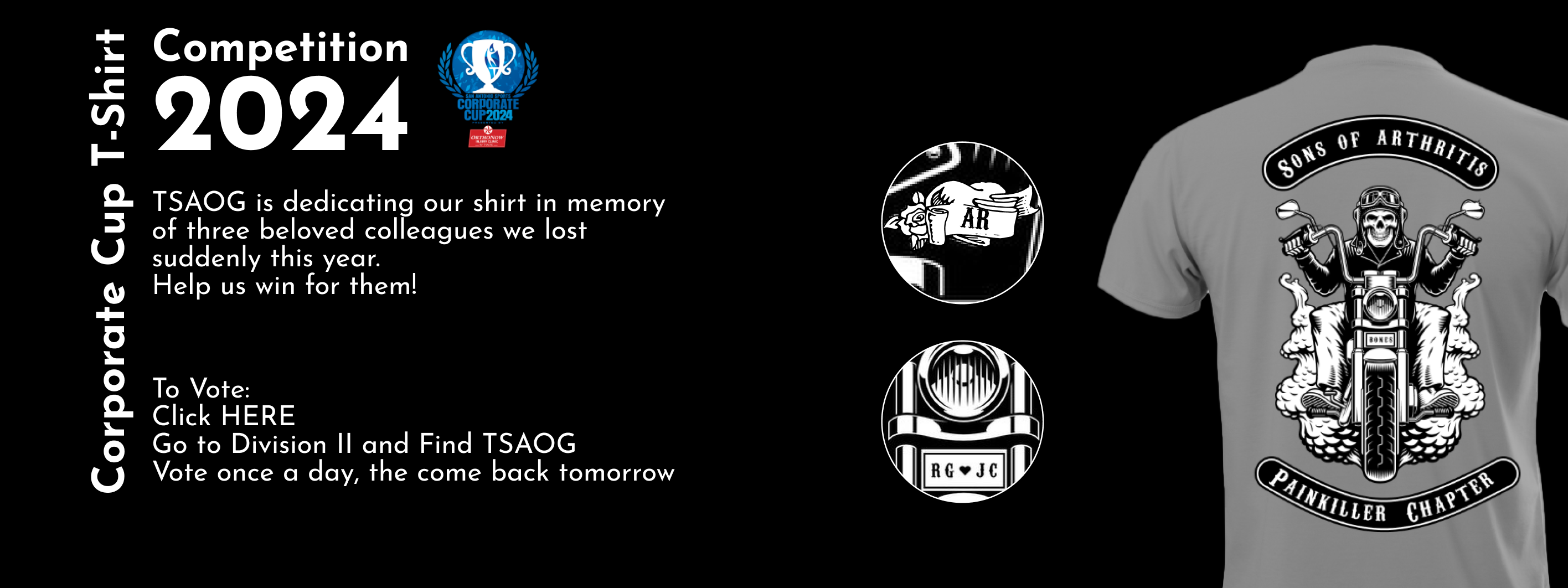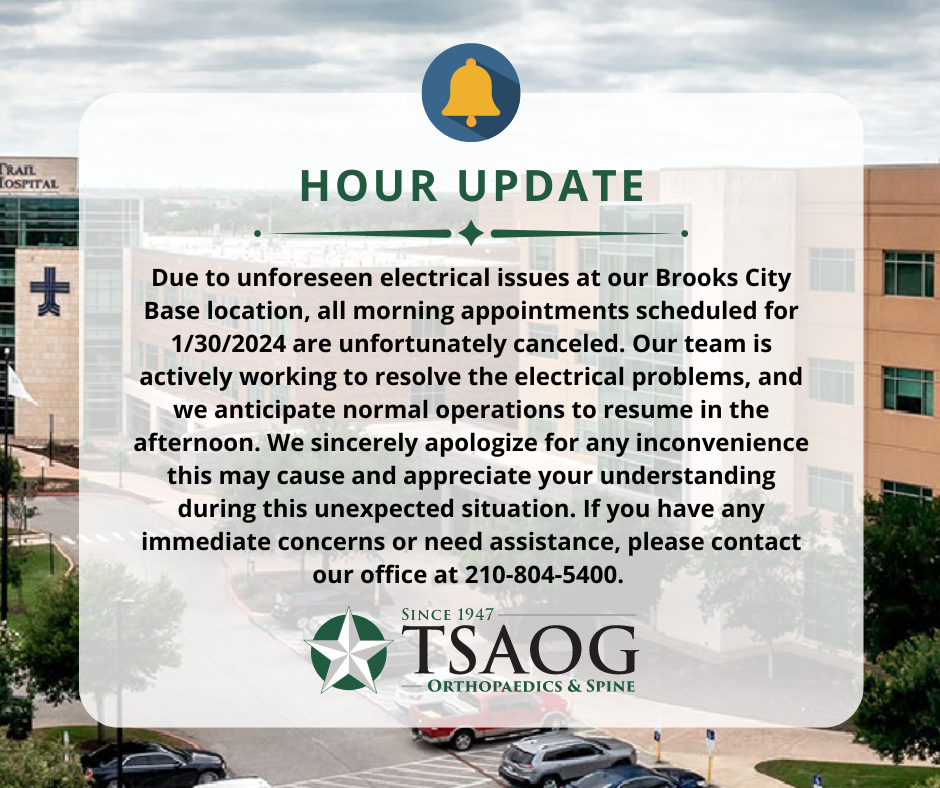Reviewed by Dr. Richard Nauert
Richard Nauert, M.D. | Sports Medicine Surgeon in San Antonio (tsaog.com)
A meniscus tear is one of the most common injuries, particularly among athletes and individuals participating in high-impact activities. Regardless of whether your treatment involves surgery, understanding the recovery timelines and knowing what to expect can help you manage your healing journey. In this guide, we outline the recovery timelines for both surgical and non-surgical treatments and offer tips to smooth the process.
How long is recovery for a meniscus tear without surgery?
Not every meniscus tear requires surgery. Non-surgical treatment may be recommended depending on the size and location of the tear. Here’s what the typical recovery timeline looks like without surgery:
0-2 Weeks: Initial Healing
The primary goals in the first couple of weeks are to reduce pain and swelling. Rest, ice, compression, and elevation (RICE) will be your best friends during this period. You may be advised to avoid putting weight on the leg, so crutches or a knee brace may be necessary. Physical therapy may begin during this time to maintain mobility and prevent stiffness.
2-6 Weeks: Restoring Range of Motion
Physical therapy will focus on gently restoring your range of motion as your knee begins to heal. During this phase, you’ll exercise to strengthen the muscles around your knee while avoiding high-impact activities.
6 Weeks-3 Months: Strengthening and Conditioning
In this phase, you’ll gradually return to more weight-bearing activities. Strengthening exercises for the quads, hamstrings, and other supporting muscles will be intensified, helping to restore stability and mobility in your knee. You’ll likely start doing low-impact aerobic exercises like swimming or cycling.
3-6 Months: Return to Regular Activities
By the 3-6 month mark, you should be able to resume most daily activities, though high-impact sports should still be avoided. You may experience occasional stiffness or discomfort, which is normal. Regular follow-ups with your physical therapist will help you stay on track for a full recovery.
How long is recovery for meniscus tear surgery?
Surgery may be the best option for certain types and degrees of meniscus tears to restore full function to the knee. Surgery is usually performed arthroscopically, which involves smaller incisions and faster recovery times than traditional surgery.
In general, if the surgery is a meniscectomy, meaning part of the torn meniscus is removed, you will likely be able to walk within a few days and return to sports as soon as 4-6 weeks. If the surgery is a repair, return to sport will likely take much longer.
While everyone’s circumstances differ, here’s a range of what to expect post-surgery:
0-2 Weeks: Immediate Post-Surgery Care
The first two weeks post-surgery are focused on managing pain and swelling. You’ll likely need crutches and a knee brace to protect the repaired meniscus. Rest is essential, along with regular icing and prescribed medications to manage pain. Physical therapy typically begins within the first few days to maintain circulation and prevent stiffness.
2-6 Weeks: Regaining Mobility
In the next few weeks, you will work with your physical therapist to rebuild your range of motion and strength. While you may start to bear some weight on your knee, it’s important to continue using crutches until your therapist advises otherwise. Low-impact activities like walking or gentle stationary biking may be introduced to keep the joint moving.
6 Weeks-3 Months: Strength and Balance Training
By this stage, your physical therapy will focus on strengthening the muscles around the knee and improving balance. You may progress to more challenging exercises, but high-impact or strenuous activities should be avoided until your care team gives you the go-ahead. Your therapist will guide you through a comprehensive strength training program to support the repaired meniscus.
3-6 Months: Returning to Normal Activities
Most patients are able to return to their normal activities between three and six months after surgery, though this will depend on the extent of the injury (the type of tear and repair performed) and how well your knee responds to therapy. Sports or high-impact activities should be avoided until your surgeon and physical therapist give the green light, as returning too soon could risk re-injury.
6-12 Months: Full Recovery
Complete recovery from meniscus surgery (especially meniscus repair) can take up to a year, especially for athletes or individuals involved in high-impact activities. While many patients feel significantly better after six months, it’s important to continue following your rehabilitation program to prevent setbacks and ensure long-term knee health.
Meniscus Tear Recovery Tips For a Healthy Healing Journey
Whether you undergo surgery or opt for a non-surgical route, following these tips can help promote a successful recovery:
Use RICE (Rest, Ice, Compression, and Elevation): RICE is a tried-and-true method for managing pain and swelling, especially in the early stages of recovery. Ice packs, compression wraps, and elevating your leg will reduce inflammation and speed up healing.
Follow Your Physical Therapy Program: Physical therapy is paramount to your recovery, regardless of whether you’ve had surgery. Consistently attending your sessions and performing your exercises at home will help restore strength and mobility to your knee.
Avoid High-Impact Activities: Even though it can be tempting to return to your regular routine quickly, avoid high-impact sports or exercises that involve twisting and pivoting. These movements can easily re-injure your meniscus if you’re not fully healed.
Maintain a Healthy Diet: Proper nutrition plays a key role in your body’s ability to heal. Focus on a diet rich in vitamins and minerals, especially those that support joint and bone health, such as calcium and vitamin D.
Consult the Experts in Orthopedics at TSAOG
Navigating a meniscus tear recovery can be overwhelming, but having the right orthopedic team on your side makes all the difference. At TSAOG Orthopaedics, our specialists are here to guide you through every step of your recovery process. Explore our Sports Medicine page to learn more about our comprehensive treatments for joint injuries, or book an appointment with TSAOG Orthopaedics today to get back to living life to the fullest














